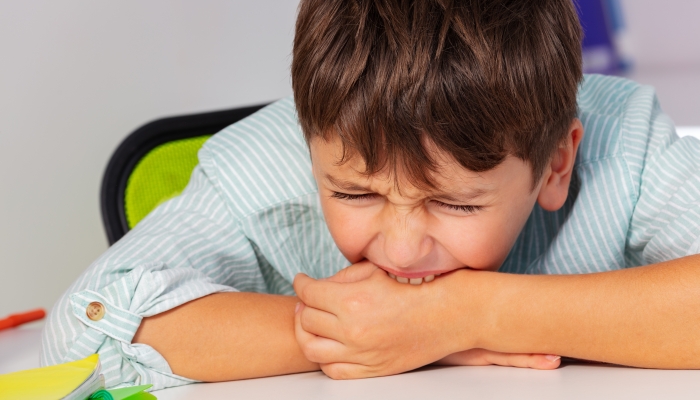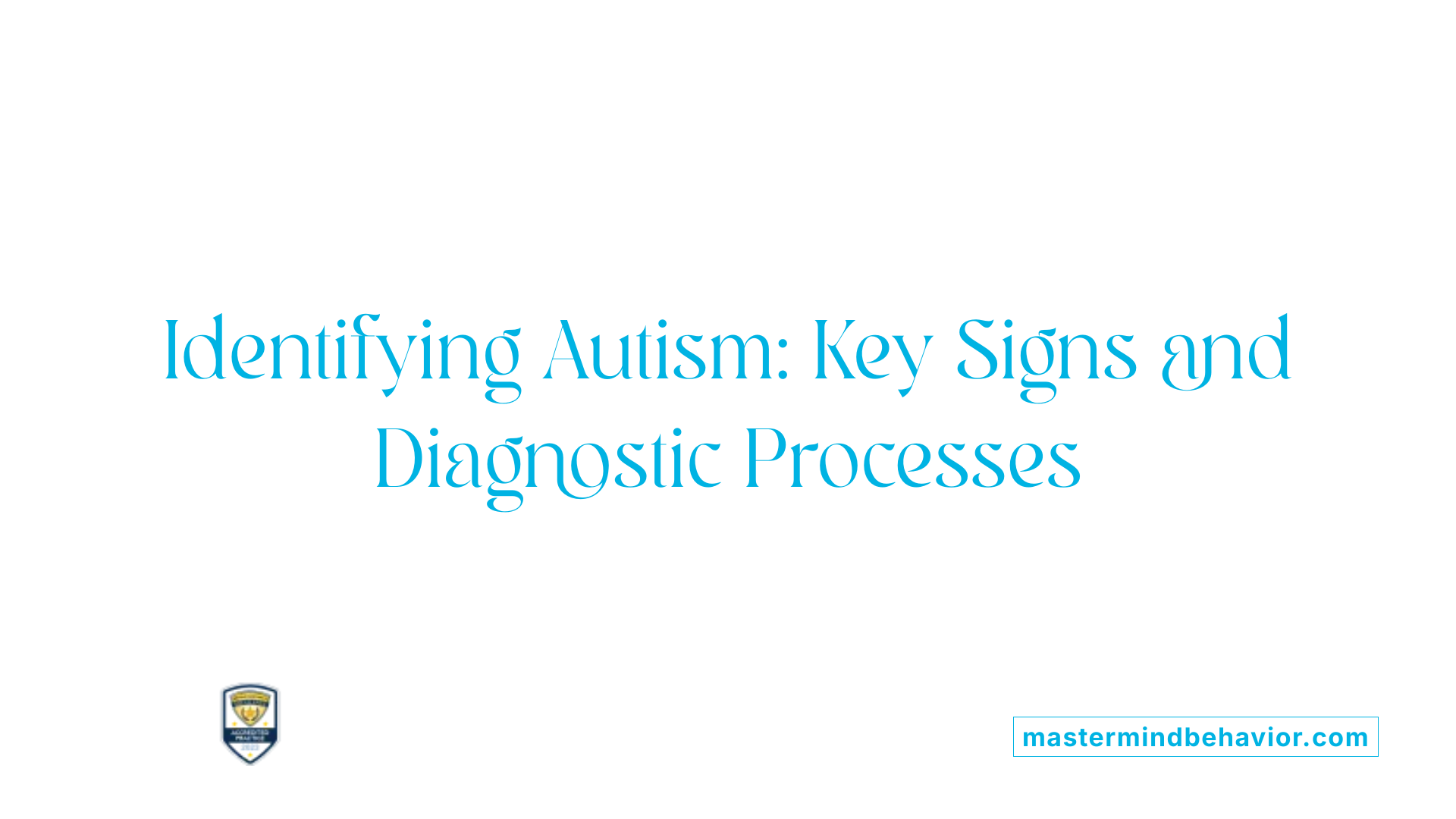Tips for creating sensory-friendly spaces with advice from an Autism Therapist's perspective
Tips for creating sensory-friendly spaces with advice from an Autism Therapist's perspective
Blog Article
Comprehending the Impact of Behavioral Autism on Life and Social Communications
You might not understand just how deeply behavioral autism influences day-to-day life and social communications. People on the spectrum typically navigate a world loaded with interaction obstacles and sensory overload. These obstacles can lead to frustration and seclusion, influencing their partnerships and overall health.
Defining Behavioral Autism and Its Features
Behavioral autism, frequently referred to as autism spectrum problem (ASD), encompasses a series of problems characterized by challenges in social interaction, interaction, and recurring actions. You might observe that individuals with ASD commonly battle to interpret social signs, which can cause misunderstandings in discussions. They may discover it tough to establish eye contact or take part in small talk, making social circumstances feel frustrating.
Interaction problems can show up in numerous methods, from postponed speech advancement to a choice for utilizing fewer words. Repeated habits, such as hand-flapping or shaking, can serve as coping systems to manage tension or sensory overload. These features can profoundly influence day-to-day live, making it vital for you to recognize and sustain those with ASD. By identifying these attributes, you can cultivate an environment that advertises acceptance and encourages efficient interaction, helping individuals with autism grow in their day-to-day interactions.
The Spectrum of Autism: Comprehending Variability in Behavior
Autism range condition (ASD) isn't a one-size-fits-all diagnosis; it differs widely amongst individuals. You may come across individuals who are very verbal and engage conveniently in discussions, while others may like solitary activities or connect non-verbally.
In addition, the means individuals with ASD respond to sensory input can differ substantially; some could be overwhelmed by brilliant lights or loud noises, whereas others flourish in promoting settings. The range additionally consists of differences in social communications; some individuals may have a hard time to interpret social hints, while others browse social settings with loved one ease. Recognizing this variability is essential, as it assists you appreciate each person's unique experience and dressmaker assistance to their particular requirements, fostering a more comprehensive environment for everybody.
Interaction Obstacles Dealt With by People With Autism
When you interact with people on the autism range, you might see their unique communication difficulties. They commonly encounter troubles with both spoken and nonverbal cues, which can affect their social communications. Comprehending these obstacles is important for promoting better links and assistance.

Verbal Interaction Difficulties
Numerous individuals on the autism spectrum experience spoken communication troubles that can substantially affect their everyday interactions. You may find it challenging to reveal your thoughts, feelings, or requires clearly. This can bring about aggravation for both you and those around you, as misconceptions happen. You may deal with initiating conversations, maintaining a topic, or recognizing nuances in speech. Often, you might like using basic language or recurring expressions, which can limit your capability to take part in deeper conversations. Your tone, volume, or speed may not line up with social expectations, triggering others to misunderstand your objectives. Recognizing these obstacles can aid you and your support network develop strategies to improve communication and cultivate much better connections with others in your day-to-day live.
Nonverbal Communication Barriers
Verbal communication isn't the only difficulty people on the autism range face; nonverbal communication obstacles can be simply as significant. These obstacles can lead to misunderstandings or misconceptions of social hints, making interactions feel complex or overwhelming. By dealing with nonverbal interaction, you can discover approaches to improve your social experiences and enhance your overall top quality of life.
Social Interaction Impacts
Social interactions can commonly really feel overwhelming as a result of the distinct communication obstacles encountered by people with autism. You might have problem with analyzing social signs, making it tough to comprehend sarcasm or body movement. This can lead to misconceptions or awkward minutes in conversations. Additionally, launching and keeping conversations might really feel challenging, triggering anxiousness in social circumstances. You may prefer structured environments, making spontaneous interactions unpleasant. It's also typical to experience trouble in engaging in little talk, which can prevent creating new friendships. Acknowledging these difficulties can assist you find strategies to improve communication, such as practicing social skills in secure setups or using aesthetic help - Autism Behavioral Therapy. Recognizing your demands allows you to browse social interactions with higher self-confidence and convenience.
Social Interaction and Relationship Structure in Autism
While structure connections can be testing for individuals with autism, understanding their unique perspectives and communication styles can cultivate meaningful links. You may see that numerous individuals on the range choose straight interaction and might deal with social signs or small talk. By being straightforward in your interactions, you can aid produce an environment where they really feel comfortable.
Involving in shared rate of interests can additionally offer as a bridge to deeper links. Whether it's a hobby, a preferred show, or a mutual interest, these typical threads can open up doors to relationship.
Every Day Life Regimen: Navigating Strategies and challenges
Steering every day life regimens can be especially testing for individuals with autism, especially when unexpected adjustments take place. You may locate comfort in having an organized routine, as it helps you anticipate what's following. When interruptions take place, it's typical to feel anxious or overwhelmed. To browse these challenges, consider applying visual routines or checklists. These devices can offer clearness and reassurance.
Establishing a routine that includes sensory breaks can likewise be useful. This helps create an understanding setting.
Lastly, method mindfulness methods to handle stress and anxiety and anxiousness. Simple breathing exercises or grounding strategies can make a substantial distinction. By incorporating these approaches, you can enhance your everyday regimen and lessen disturbances, making life feel a lot more convenient.
Staminas and Abilities of Individuals on the Autism Spectrum
Recognizing every day life routines is simply one aspect of the autism experience. Numerous individuals on the autism spectrum possess visit this site amazing strengths and capacities that establish them apart. You might find that your interest to detail is extraordinary, permitting you to master tasks that require accuracy and focus. Your capability to think outside package can lead to innovative solutions in various scenarios.
Additionally, your memory abilities frequently radiate, specifically in locations of rate of interest. Aba Therapist. This knack for retaining info can make you a useful resource in fields like scientific research, modern technology, or art. You might likewise exhibit strong visual reasoning, enabling you to imagine intricate ideas and fix problems artistically
In addition, your one-of-a-kind point of view on the world can promote compassion and understanding in others, improving social interactions. Accepting these strengths not just enhances your self-confidence but likewise helps others value the diverse abilities you bring to the table.
Developing Comprehensive Settings for Individuals With Autism
Producing comprehensive environments for individuals with autism begins with developing sensory-friendly spaces that accommodate their one-of-a-kind demands. You can likewise promote opportunities for social interaction, assisting to construct connections and relationships. By making these adjustments, you'll add to a more inviting atmosphere for everyone.
Creating Sensory-Friendly Spaces
While designing sensory-friendly spaces, you can try these out it's vital to review the unique requirements of individuals with autism. Beginning by selecting calming colors and soft illumination to produce a relaxing setting. When bewildered, incorporate silent areas where individuals can charge and retreat. You'll wish to decrease loud noises and interruptions, using soundproof materials or white noise devices to aid maintain serenity. Take into consideration tactile components like soft fabrics or fidget-friendly items that can give convenience. Ascertain that rooms are adaptable, permitting very easy reformation to accommodate various tasks. Consist of aesthetic timetables or clear signs to assist individuals navigate the area confidently. By thoughtfully integrating these aspects, you can develop a welcoming environment that supports sensory needs and promotes overall wellness.
Promoting Social Interaction Opportunities
Creating sensory-friendly areas not just addresses specific comfort yet likewise sets the phase for significant social communications among people with autism. Motivate peer mentoring, combining individuals with autism with supportive peers that can lead them with social circumstances. By implementing these techniques, you can improve social opportunities, aiding people with autism construct relationships and enhance their social abilities in a safe, inviting setting.

Often Asked Inquiries
Just How Can Buddies Assistance Someone With Behavioral Autism?
You can support a friend with behavior autism by being individual, listening proactively, and appreciating their borders. Involve in activities they delight in, communicate freely, and create a comfy setting where they feel valued and recognized.
What Resources Are Readily Available for Moms And Dads of Children With Autism?
You can explore different sources for moms and dads of youngsters with autism, including support system, educational sites, and regional area solutions. Linking with other moms and dads can additionally provide useful insights and shared experiences to help navigate challenges.
Can Behavioral Autism Modification With Time?

Yes, behavioral autism can transform Discover More in time. You might discover changes in communication, social skills, and behavior as your kid grows. Early intervention and assistance usually play essential functions in these developmental changes.
Exactly How Do Sensory Level Of Sensitivities Affect Day-to-day Live?
Sensory level of sensitivities can make day-to-day experiences overwhelming. You could fight with loud noises or brilliant lights, causing stress or evasion. Discovering settings that fit your demands can considerably improve your comfort and general life.
What Prevail Misconceptions Regarding Behavioral Autism?
You might assume behavior autism just impacts interaction skills, however it's more complicated. Several presume people do not have compassion or knowledge, which isn't real. Comprehending these misunderstandings aids foster acceptance and support for those on the range.
Behavioral autism, frequently referred to as autism spectrum disorder (ASD), includes an array of conditions defined by challenges in social communication, communication, and repetitive actions.Social communications can commonly feel frustrating due to the special communication difficulties encountered by people with autism.Creating sensory-friendly rooms not just addresses individual convenience but likewise establishes the stage for meaningful social interactions among individuals with autism. Encourage peer mentoring, combining individuals with autism with supportive peers that can direct them with social situations. By applying these strategies, you can enhance social opportunities, assisting individuals with autism build relationships and enhance their social skills in a risk-free, inviting setting.
Report this page